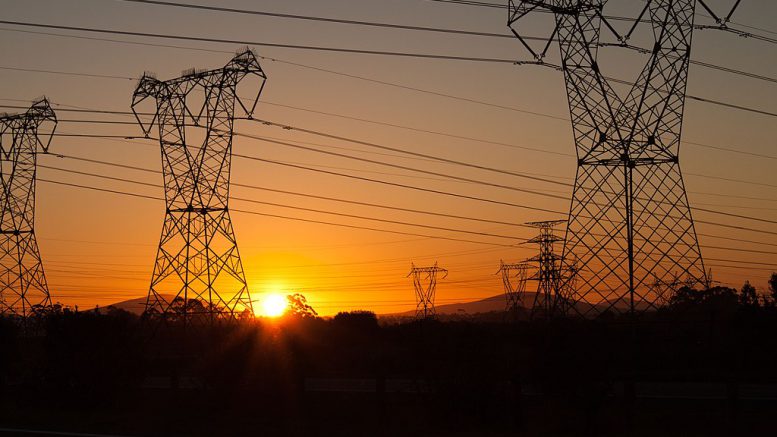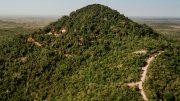This year’s Mining Indaba conference was notable for two things. One was the prominent presence of both Chinese and U.S. delegations looking for critical minerals partners in Africa. The other was that it shone a glaring spotlight on South Africa’s deepening energy crisis.
Just two days after speaking at Indaba in Cape Town, South Africa’s president Cyril Ramaphosa declared a state of disaster in response to rolling blackouts that have become ever more frequent in the nation.
The Feb. 9 declaration was not a surprise; instead, it finally reflected the reality that South Africans have been living for the past 15 years and has only worsened in recent months.
Last year, the population endured 288 days of electricity cuts, according to the BBC, with 2023 bringing blackouts of up to 15 hours per day. At the beginning of February, the country had experienced 100 consecutive days of scheduled rolling blackouts or “loadshedding,” according to a Bloomberg report. Not only have the blackouts knee-capped businesses, but when they happen at night, the total darkness has emboldened criminals and left citizens vulnerable — and infuriated.
State-owned Eskom produces over 90% of the country’s electricity, and its aging coal plants are starting to give out. Eskom’s R400 billion (US$22.3 billion) debt is a big factor in why it hasn’t made necessary investments in maintenance and new capacity over the years. (Observers point to corruption as a secondary factor.)
The situation has now reached a point where the crisis has become a disaster, South African energy analyst Clyde Mallinson told DW News in late January. Noting that average power demand in the country is about 27,000 MW — far above the 21,000 MW the country can produce, Mallinson said: “It needs almost a war-like effort to pull us out of this.”
Ramaphosa, who faces an election next year, has pledged that the disaster declaration, which will allow the government to bypass some of the bureaucratic processes normally mandated in the procurement and delivery of services, will help deliver a “massive increase” in grid power over the next 12-18 months.
Still the government has warned that loadshedding will continue for at least a year. Moreover, the last time such a declaration was used, which was in response to the Covid-19 pandemic, it resulted in up to US$137 million in fraudulent contracts.
The effect on miners in the nation — a big producer of coal, iron ore and PGMs — has been substantial. (A parallel corruption-driven rail crisis affecting state-owned Transnet has compounded difficulties for miners, crimping their access to global markets last year just as Russia’s war in Ukraine sent commodities prices soaring.)
In January, South Africa’s Minerals Council noted that with recent power price increases announced by Eskom, electricity will make up 12.5% of mining costs by the end of next year, up from 9% in January. Since 2008, electricity prices for the mining sector have risen eightfold.
According to the Minerals Council, which has advocated for greater private sector involvement in both the electricity and rail sectors, mining production declined by 6% last year. The mining sector is a big power consumer, buying about 14% of electricity generated by Eskom, or 30% if smelters and refineries are included.
“The adverse operating environment of unreliable and expensive electricity, and a crisis in transport logistics for bulk mineral exports erode the mining sector’s global competitiveness and may very well culminate in job losses in mining,” said Henk Langenhoven, the industry association’s chief economist, in a release in January.
At Indaba, Ramaphosa acknowledged the “huge impact” the crisis has had on miners. Until recently, miners have had limited ability to generate their own power. In mid-2021, the government changed the threshold requiring a licence for power generation for private generators and companies to 100 MW from 10 MW.
Ramaphosa said 89 projects had been developed by mining companies with a particular focus on renewables including solar and wind, as well as battery storage.
“Not only will these projects support mining operations themselves and bring down operation costs, but they will also add much needed power to the country’s overall supply and support South Africa’s decarbonization process,” he said in his address, according to Voice of America.
An insurmountable challenge
While Ramaphosa, who’s been president since 2018, has mostly sat on his hands as the crisis has worsened, the government did release an ambitious R1.5-trillion (US$83.5 billion) five-year energy transition plan last November.
The plan focuses on improving the energy grid as well as adding renewable energy; planning for adoption of electric vehicles; and investments in green hydrogen to aid in decarbonization and for export.
While South Africa has secured support from international partners (France, Germany, U.K. and U.S. as well as the EU) in the form of the Just Energy Transition Partnership (JETP) first announced at climate conference COP 26 in 2021, the amount pledged so far only comes to US$8.5 billion.
In the meantime, even if miners can now supply their own energy, South Africa is sliding down the list of preferred mining jurisdictions. In a note to clients, BMO Capital Markets mining analyst Colin Hamilton, who attended Indaba, said companies there also report they are bleeding talent to other jurisdictions.
It all adds up to even more obstacles to achieving a “just” energy transition that doesn’t leave the country’s poorest even worse off than they are now. If its electricity infrastructure is already in disarray, what are the chances that it can manage decarbonization in an orderly way while cushioning the effects for the country’s 91,000 coal workers?
Add a corruption scandal that broke late last year, dubbed ‘farm-gate,’ that points to possible “gross misconduct,” corruption and “violation of the constitution” on Ramaphosa’s part, and there is even less scope for optimism on short-term progress.






Be the first to comment on "Every element of South Africa’s ‘just energy transition’ is in question"